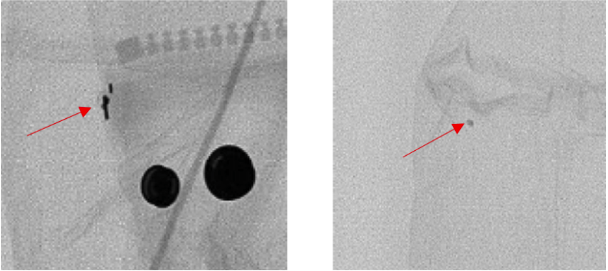Image processing and deep-learning methods for quality control of textile production.
The project
Software for the detection of intrusions in the finished product.
ACTOR has designed a detection system based on an intrusion detector and a classifier. The detector analyzes each X-ray image of the garment and proposes objects that are candidates for intrusion; the classifier, trained on hesitant images, distinguishes between true and false positive intrusions.

Quality Control.
Apparel production is the result of a series of cooperative activities on a variety of raw materials, product types, supply chains, and production lines, production volumes, retail markets, technologies. For full customer satisfaction, quality control must be practiced at any level, from the procurement of raw materials to the packaged garment. Indeed, the quality of textile products is assessed in the pre-production phase, during production, and with a final inspection after completion. Along a production line, product quality depends on many attributes such as fiber standard, yarns, fabric structure, color tone, surface design, fasteners, and other accessories. This level of quality control also includes contamination control. The finished product can meet the requirements according to the previously mentioned attributes, but it can show clues to all production activities: you can find clips and needles stuck in the padding, needle and button tips, pebbles (pebbles), even construction parts such as eyelets or zip levers.
Therefore, the task to perform is detecting this type of contamination and to convey the controlled object to a control room where the contamination is removed. All items need to be checked, so the detection subsystem needs to be fast enough, typically 5 seconds. The data is 8-bit grayscale images obtained by X-ray scanners.
ACTOR has designed a detection system based on an intrusion detector and a classifier. The detector analyzes each X-ray image of the garment and proposes objects that are candidates for intrusion; the classifier, trained on hesitant images, distinguishes between true and false positive intrusions.
The system, on a real production of garments, achieved performances with a percentage of false positives of less than 15%, and of false negatives (intrusions not detected) of less than 2%.

